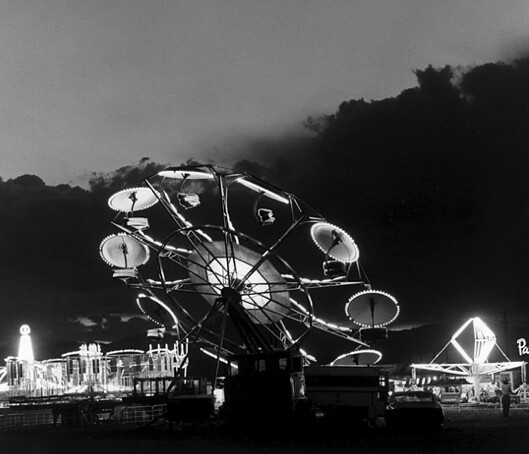
I was especially taken with Adams' later work, focussing more on the contrast between nature and human development, and humans' intrusion on and manipulation of the natural environment. I loved how Adams turned the whole concept of the pastoral upside down: instead of using nature to illustrate human emotions, Adams used the pastoral to underscore the intrusion of humanity in nature, and, despite its vastness, nature's inability to completely repell human development. Our perception of what is "natural" has been scewed to the point that we no longer notice when landscapes have been altered by human life. Adams' photo of an irrigaion canal surrounded by trees demonstrated this clearly; until I was told what the photo actually depicted, I had no idea I was looking at a man-made river. Many of Adams' later photos focussed on humans' denial that we have encroached on nature and altered it--murdered it--before thinking twice about what we were altering; an entire room was filled with photos of clear-cut forests that were blatantly reminiscent of casualties of war.
The juxtaposition of human development and the nature around it in Adams' photos illustrated both the relationship between people and nature, their similarities and differences alike, as well as the reality of what we do to our world every day without taking the time to think about what it is we are doing. The photos show an attempt at coexistence and a stark failure on our part to function in such a relationship. Instead, we have spent a great deal of time and energy trying to change nature to suit us, and see only what we would like to see, that we have ignored the voices from nature itself, to the point where we can stoop to look at a flower on the ground and miss the corpse of a dead animal beside it. Similarly, a number of photos depicted peoples' ironic need to bring nature inside: a painting of fruit hanging on the wall in the kitchen, for instance. We need and want nature in our daily lives, but, conversely, use walls and houses and construction and development to shut nature out in nearly everything we do.
Adams' work depicts tragedies in our day-to-day lives that, although vast in reality, fall on deaf ears and blind eyes until contained in a small frame. Through the use of the pastoral in contrast with human development and destruction, Adams illustrates human influence in, and our inability to properly live in harmony with, the world around us. I am reminded of a scene in Fern Gully where the fairy protagonist touches a tree and asks, "can't you feel its pain?" Adams exhibit showed that, clearly, we can't.
The past few days have been really heavy on the artistic thought/inspiration/revelation. I need a serious nap, and then after that I just want to do a crap ton of art. WUDDUP?!?!?







No comments:
Post a Comment